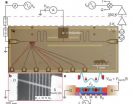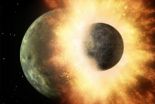Chelsea Catsburg, a doctoral student at the Keck School of Medicine of the University of Southern California, Los Angeles, presented these data at the 11th Annual AACR International Conference on Frontiers in Cancer Prevention Research, held here Oct. 16-19, 2012.
Dietary protein is made up of amino acids, which can be naturally metabolized into biogenic amines, according to Catsburg. Research has shown that the processing and storage of meat increases amine concentrations. When these amines are in the presence of nitrites, they generate nitrosamines, which have carcinogenic properties. In addition, heme iron, found in red meat, has been shown to increase the formation of nitrosamines from amines.
"Nitrosamine formation occurs predominantly in the stomach and intestines, so these exposures have been studied extensively in relation to gastric cancer and somewhat in relation to colorectal cancer," Catsburg said. "However, there is evidence that these reactions also take place in the bladder, particularly in the presence of infection."
Catsburg and colleagues had previously found that meat groups with high heme and high amine concentrations, such as salami and liver, increased risk for bladder cancer. In this study, they examined whether genetic variation in DNA repair enzymes, available to correct the damage caused by these endogenously formed carcinogens, modified these associations.
The researchers tested 627 single-nucleotide polymorphisms in 27 genes involved in N-nitroso compound metabolism or DNA repair. They collected data from 355 bladder cancer cases and 409 controls in the Los Angeles Bladder Cancer Study.
"We found that a polymorphism in the RAD52 gene modified the effect of these exposures," Catsburg said. "This polymorphism is suspected to reduce the DNA repair activity of the RAD52 protein, and the association of these meat groups and bladder cancer risk was significantly higher in individuals with one or more copies of this polymorphism."
These results further support recommendations by the World Cancer Research Fund to limit red meat intake and to avoid processed meats to reduce risk for stomach and bowel cancer, according to the researchers.
"This study suggests that these exposures may also affect secondary organs such as the bladder," Catsburg said. "Individuals at risk for bladder cancer may wish to avoid intake of red and processed meats, especially if they have genetic polymorphisms that reduce DNA repair activity and make them more vulnerable to the effects of carcinogens."
Further replication of this study to support an association between heme and meat intake and the risk for bladder cancer is necessary, she added.
### Follow the AACR on Twitter: @aacr #aacr Follow the AACR on Facebook: http://www.facebook.com/aacr.org
About the American Association for Cancer Research Founded in 1907, the American Association for Cancer Research (AACR) is the world's first and largest professional organization dedicated to advancing cancer research and its mission to prevent and cure cancer. AACR membership includes more than 34,000 laboratory, translational and clinical researchers; population scientists; other health care professionals; and cancer advocates residing in more than 90 countries. The AACR marshals the full spectrum of expertise of the cancer community to accelerate progress in the prevention, biology, diagnosis and treatment of cancer by annually convening more than 20 conferences and educational workshops, the largest of which is the AACR Annual Meeting with more than 17,000 attendees. In addition, the AACR publishes seven peer-reviewed scientific journals and a magazine for cancer survivors, patients and their caregivers. The AACR funds meritorious research directly as well as in cooperation with numerous cancer organizations. As the scientific partner of Stand Up To Cancer, the AACR provides expert peer review, grants administration and scientific oversight of team science and individual grants in cancer research that have the potential for near-term patient benefit. The AACR actively communicates with legislators and policymakers about the value of cancer research and related biomedical science in saving lives from cancer.
For more information about the AACR, visit www.AACR.org.
Abstract:
A97 Dietary nitrosamines, genetic variation in DNA repair and metabolism genes, and bladder cancer risk in the Los Angeles Bladder Cancer Study. Chelsea E. Catsburg1, Roman Corral1, Juan Pablo Lewinger1, Amit D. Joshi1, Manuela Gago-Dominguez2, Jian-Min Yuan3, Victoria K. Cortessis1, Malcolm C. Pike1, Mariana C. Stern1. 1University of Southern California, Los Angeles, CA, 2University Hospital Santiago de Compostela, Santiago De Compostela, Spain, 3University of Pittsburgh Cancer Institute, Pittsburgh, PA.
Background: N-nitroso compounds (NOCs) can cause direct DNA damage and are known to induce a wide range of tumors, including tumors of the bladder in animal models. Humans are exogenously exposed to NOCs via diet, in particular processed meats, and cigarette smoke. However, NOCs, such as the carcinogen N-nitrosodimethylamine (NDMA), can also be formed endogenously from their dietary precursors: nitrates, nitrites and amines. The heme found in red meat is a potent stimulator of this endogenous formation. Our previous findings from the Los Angeles Bladder Cancer Study show that intake of meats with concurrent high amine and heme content, such as salami and liver, are associated with an increased risk of bladder cancer.
Once NOCs are formed, they need to be activated metabolically by cytochrome P450 enzymes into electrophilic intermediates to exert a carcinogenic effect. These intermediates then react with DNA to form bulky adducts which, if not repaired, can lead to DNA instability and ultimately DNA damage. These reactive intermediates can also undergo metabolism by glutathione S-transferases (GSTs), which results in their detoxification. Multiple DNA repair pathways are available to correct NOC-induced damage.
Methods: We examined the role of dietary sources of NOCs and NOC precursors in conjunction with variation in genes involved in NOC metabolism and DNA repair in the risk of bladder cancer using 355 bladder cancer cases and 409 controls from the Los Angeles Bladder Cancer Study, a population-based case-control study. We tested each of 627 SNPs in 27 genes involved in NOC metabolism and DNA repair for effect modification of exposure to different dietary sources of NOCs and NOC precursors. Multiple testing was accounted for using a global Bonferroni correction, across all SNPs combined, and also at the gene and pathway levels.
Results: A polymorphism in the base excision repair gene hOGG1 (Ser326Cys; rs1052133) was shown to modify the effect of intake of high amine and heme content meats with a globally corrected p-value of 0.014 (crude p-value = 3.7 x 10-5). We found that the previously identified positive association between intake of high amine and heme content meat intake and bladder risk was restricted to individuals carrying one or more copies of the hOGG1 codon 326 Cys allele, which has been reported to reduce OGG1 protein activity.
Conclusion: Results of this study build upon our previous findings that consumption of meats with high amine and heme content, such as salami and liver, are potential risk factors for bladder cancer. Our current finding of modification of this association by a DNA repair variant supports a role for endogenous dietary nitrosamines in bladder carcinogenesis.


